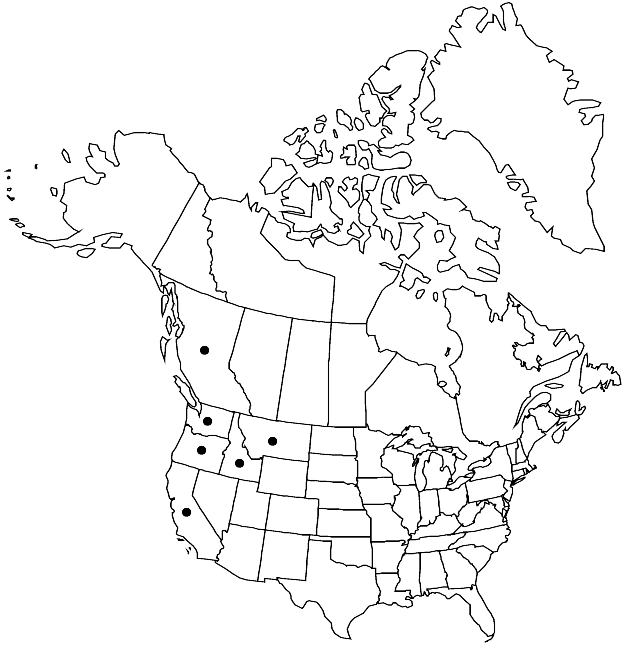Fontinalis howellii
Bot. Gaz. 13: 200, plate 18. 1888.
Plants to 35 cm, reddish, yellow-red, golden brown, or pale green. Stems medium to robust, rarely slender, rigid; stem and branch apices firm, loosely foliate, not angled; axillary hairs 600–750 µm, 6–10 cells, basal-cell quadrate to short-rectangular, red, distal cells long-cylindric, hyaline. Leaves strongly dimorphic. Stem-leaves erect to erect-spreading when dry or moist, ovatelanceolate to lanceolate, sharply or weakly keeled and conduplicate, keels straight beyond basal curve, 4–7 mm; margins plane, sometimes erect to somewhat involute at apex; apex acute to narrowly obtuse; medial laminal cells 110–180 × 12–16 µm. Branch leaves erect-spreading when dry, spreading and sharply 3-ranked when moist, lanceolate to linear-lanceolate, not keeled, concave to tubular-concave, 3–6 mm; margins involute; apex long-acuminate, acute, or somewhat rounded. Perigonia with leaves 0.7 mm. Perichaetia with leaves oval to suborbiculate, 2–3 mm, apex obtuse. Seta 0.2–0.3 mm. Capsule immersed to slightly emergent, oblong to subcylindric, 2–2.5 mm; operculum conic, 1 mm; endostome trellis perfect. Calyptra 2 mm. Spores 12–16 µm.
Habitat: Logs, sticks, shrubs, swamps, pools, ponds, streams, streamlets, springs, wet rock in seeps, often seasonally dry
Elevation: low to high elevations (0-1600 m)
Distribution

B.C., Calif., Idaho, Mont., Oreg., Wash.
Discussion
Wet plants of Fontinalis howellii have spreading, sharply three-ranked branch leaves; when dry the stem and branch apices are firm and loosely terete-foliate. Typical F. howellii differs from other keeled species of Fontinalis in having strongly and abruptly dimorphic leaves: stem leaves keeled-conduplicate with straight keels after the basal curve; branch leaves linear-lanceolate to lanceolate and concave to tubular-concave. Permanently submerged plants (chrysophylla expression) differ from the typical form in their smaller size and mostly concave stem leaves.
The oreganensis expression of Fontinalis antipyretica is similar but differs from F. howellii in having often smaller plants; some transitional leaves between stem and branch leaf forms; shorter, broader branch leaves; and triangular stem and branch apices that when dry have a swollen aspect very different from the firm, loosely foliate stem and branch apices in F. howellii. All collections referred to F. howellii from eastern North America and recent reports from Germany represent the oreganensis expression of F. antipyretica. The only other Fontinalis taxon with tubular-concave leaves is the cymbifolium expression of F. novae-angliae. It differs from F. howellii in having consistently concave stem leaves.
Selected References
None.